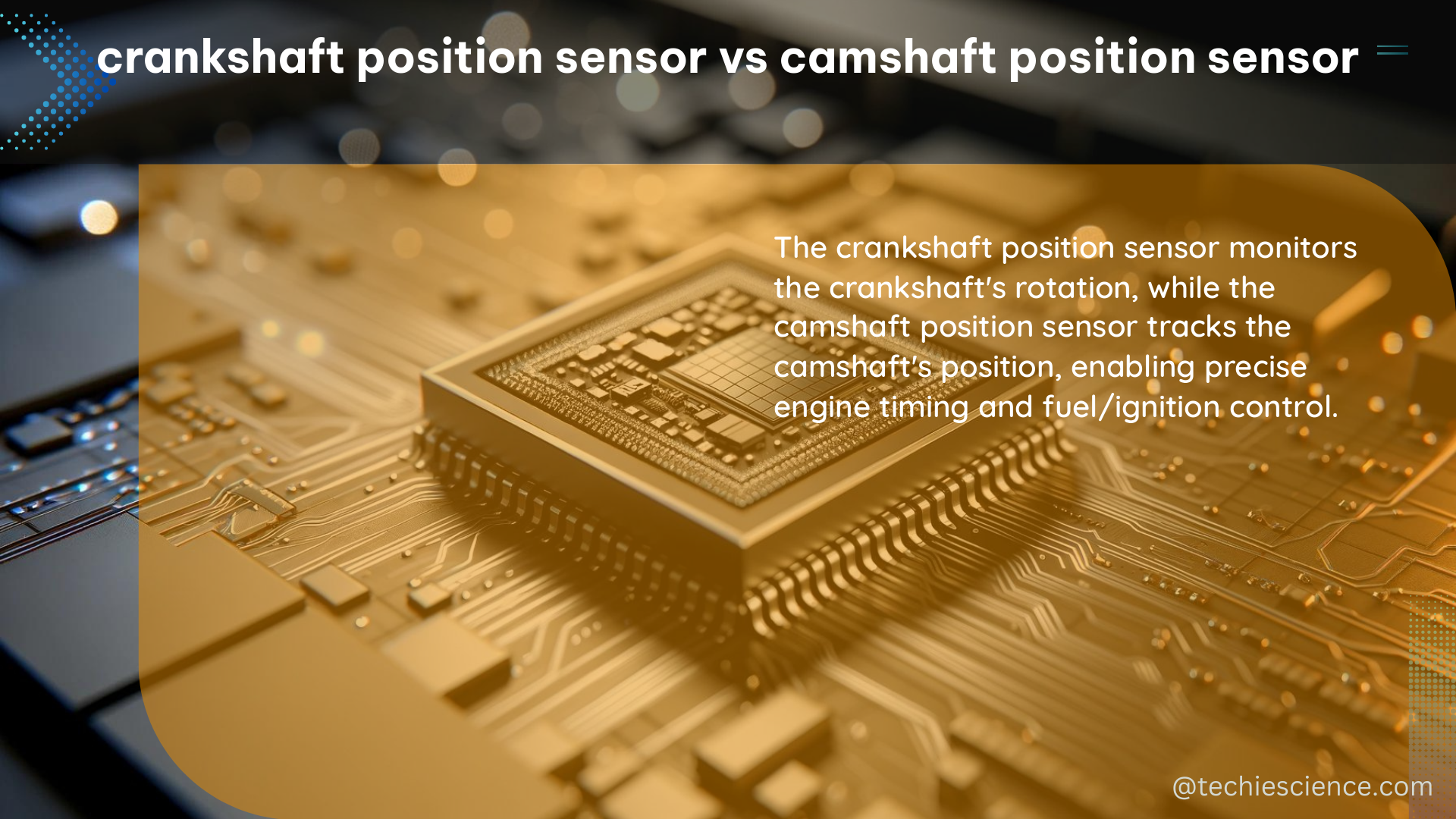The crankshaft position sensor (CKP) and camshaft position sensor (CMP) are two critical components in modern vehicles that provide essential information to the Engine Control Module (ECM) for proper engine operation. These sensors play a crucial role in ensuring efficient fuel injection, ignition timing, and overall engine performance.
Crankshaft Position Sensor (CKP)
Location and Function
The crankshaft position sensor is typically mounted on the engine block or timing cover, near the crankshaft pulley. Its primary function is to monitor the crankshaft’s angle and speed of spin, providing the ECM with critical engine speed, position, and timing reference data.
Measurements and Diagnostics
The CKP sensor measures the crankshaft’s position and speed, which helps the ECM regulate ignition timing and engine RPM. Diagnostic trouble codes (DTCs) associated with the CKP sensor include P0335, P0336, P0337, P0338, P0339, P0340, P0341, P0342, P0343, P0344, P0345, P0346, P0347, P0348, P0349, P0365, P0366, P0367, P0368, P0369, P0390, P0391, P0392, P0393, and P0394.
Sensor Specifications
The CKP sensor typically has a resistance range of 730-1000 ohms between pins 2-3, while pins 1-3 and 1-2 should read infinite ohms (no connection). It’s essential to refer to the manufacturer’s specific resistance specifications for your vehicle.
Camshaft Position Sensor (CMP)

Location and Function
The camshaft position sensor is mounted in the cylinder head, near the camshaft. Its primary function is to monitor the camshaft’s position and rotation, providing the ECM with data to determine when and which cylinder is up for firing, ensuring optimal fuel injection and sparking sequences.
Measurements and Diagnostics
The CMP sensor measures the camshaft’s position and rotation, which helps synchronize the fuel injection and sparking sequences. The diagnostic trouble code associated with the CMP sensor is typically GT151.
Sensor Specifications
The resistance specifications for the CMP sensor can vary depending on the vehicle manufacturer. It’s crucial to refer to the vehicle-specific resistance data when testing the CMP sensor.
DIY Testing Guide
To test the CKP and CMP sensors, follow these steps:
-
Locate the sensors: Identify the location of the CKP and CMP sensors on your vehicle. The CKP is usually on the engine block or timing cover, near the crankshaft pulley, while the CMP is mounted in the cylinder head, near the camshaft.
-
Check resistance: Use a multimeter to measure the resistance of the CKP and CMP sensors. For the CKP, the resistance between pins 2-3 should be 730-1000 ohms, while pins 1-3 and 1-2 should read infinite ohms (no connection). Refer to the vehicle-specific resistance specifications for the CMP sensor.
-
Check waveforms: Use an oscilloscope to compare the relative positions of the CKP and CMP sensor waveforms. This will help you identify any misalignment or issues with the sensors.
-
Compare to manufacturer data: Compare your measurements and waveform data to the manufacturer’s specifications or known good CKP/CMP sensor data.
-
Check individual sensor functionality: Before performing the comparisons, ensure that the individual CKP and CMP sensors are functioning correctly.
By following this comprehensive guide, you can effectively diagnose and troubleshoot any issues related to the crankshaft position sensor and camshaft position sensor in your vehicle.
Reference:
- Cam and Crank Sensors
- Camshaft Sensor vs Crankshaft Sensor
- Diagnosing Cam Position Sensor vs Crank Position Sensor

The lambdageeks.com Core SME Team is a group of experienced subject matter experts from diverse scientific and technical fields including Physics, Chemistry, Technology,Electronics & Electrical Engineering, Automotive, Mechanical Engineering. Our team collaborates to create high-quality, well-researched articles on a wide range of science and technology topics for the lambdageeks.com website.
All Our Senior SME are having more than 7 Years of experience in the respective fields . They are either Working Industry Professionals or assocaited With different Universities. Refer Our Authors Page to get to know About our Core SMEs.